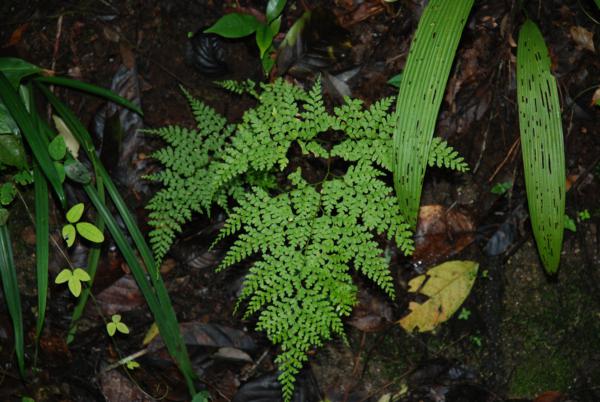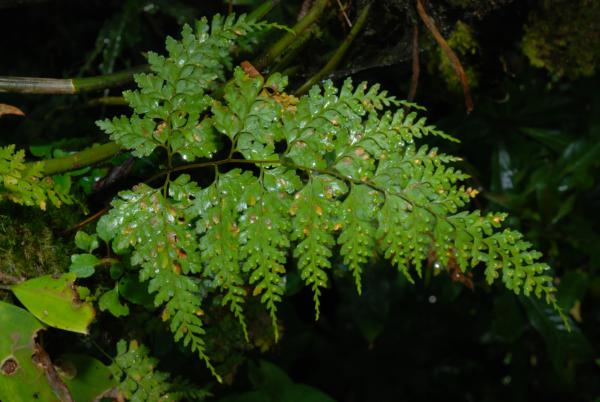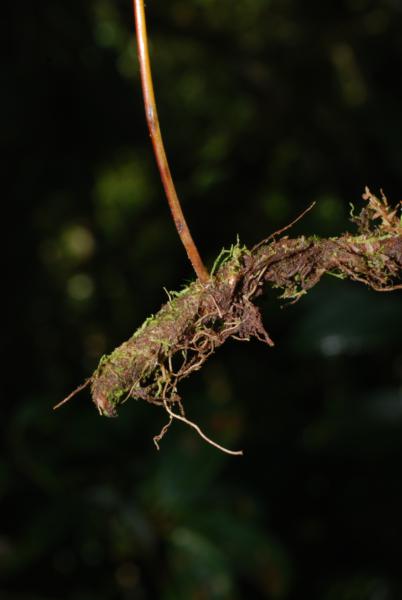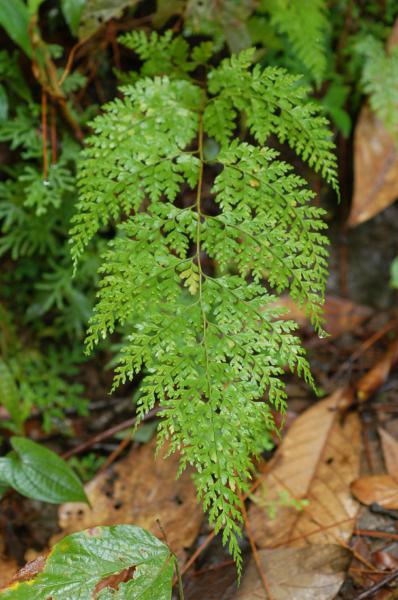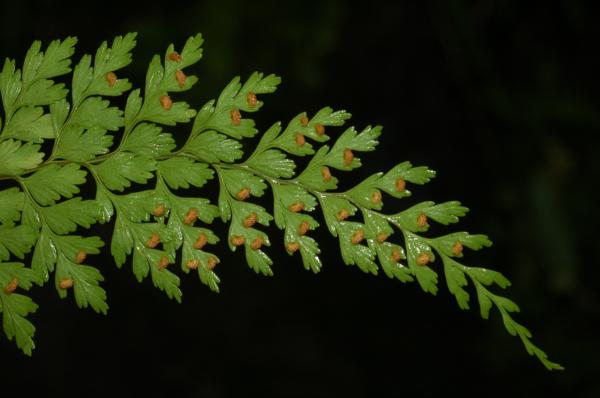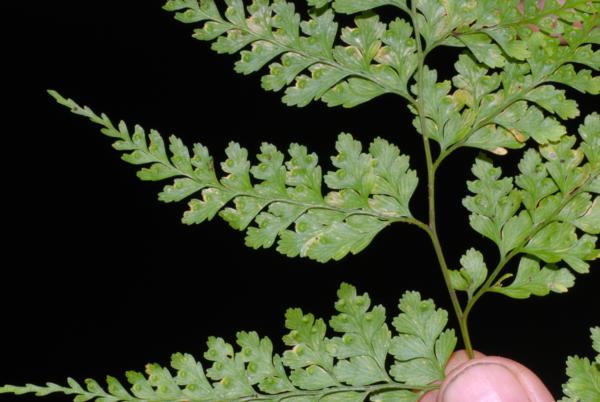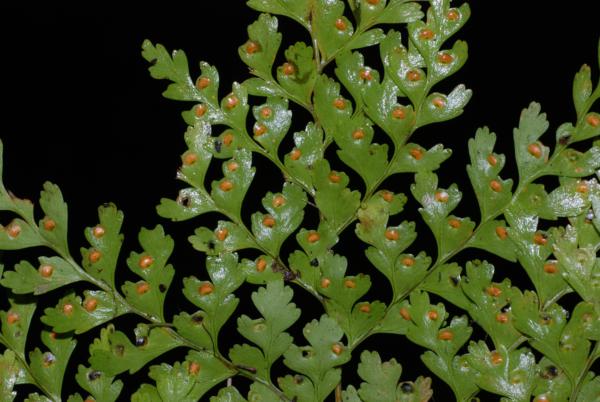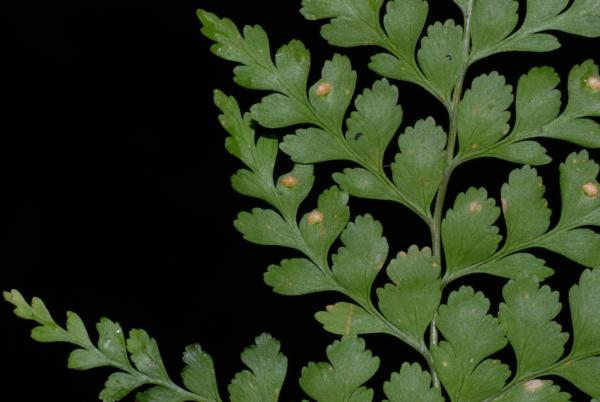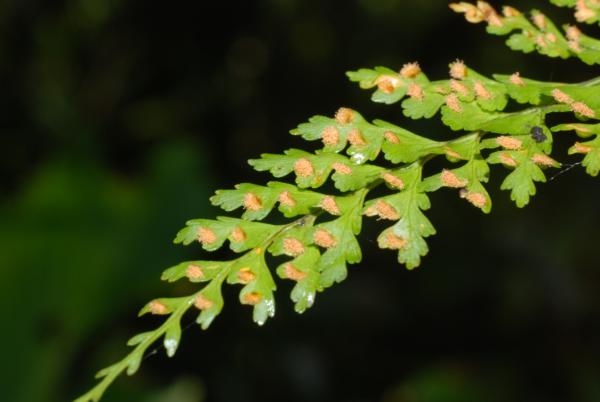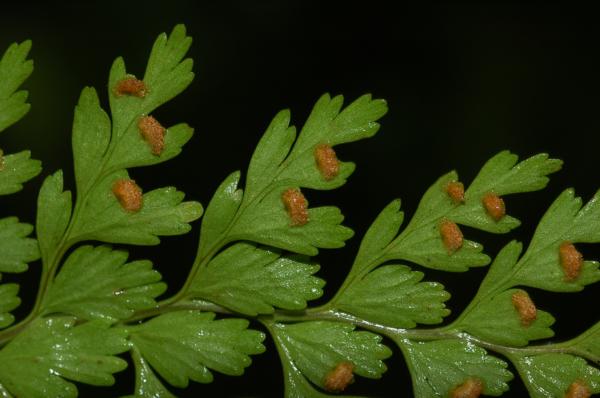
Leucostegia immersa C.Presl
Family
Dryopteridaceae
Nomenclature
Leucostegia immersa C.Presl, Tent. Pterid.: 95, t. 4, f. 11. 1836; Bedd., Handb. Ferns Brit. India: 51. 1883; C.Chr., Contr. U.S. Natl. Herb. 26:331. 1931; Tardieu & C.Chr., Fl. Indo-Chine 7(2): 113. 1939; Holttum, Rev. Fl. Malaya ed. 1, 2: 352. 1955 [‘1954’]; Ching, Fl. Reipubl. Popularis Sin. 2: 296, pl. 26, f. 1–3. 1959; Tagawa & K.Iwats., SouthE. Asian Stud. 5: 76. 1967; Tagawa & K.Iwats., Fl. Thailand 3: 169, f. 12.5. 1985; Nooteboom, Fl. Males., Ser. II, Ferns and Fern Allies 3: 274, f. 3. 1998; Boonkerd & Pollawatn, Pterid. Thailand: 172, 173, 236. 2000. – Davallia immersa (C.Presl) Wall. ex Hook., Sp. Fil. 1: 156. 1846. – Acrophorus immersus (C.Presl) T.Moore, Proc. Linn. Soc. London 2: 286. 1854. – Humata immersa (C.Presl) Mett., Fil. Hort. Bot. Lips. 102. 1856. – Type: Wallich 256 (K, L, P), Nepal, 1821.
Description
Rhizome long creeping, bearing fronds remotely; hairs rather dense, golden-yellow, multicellular, wooly; scales narrowly lanceolate, up to 4 by 0.4 mm, light brown, membranous, entire at margin. Stipes stramineous or brownish on lower surface, scaly at base, glabrescent upwards, up to 39 cm long. Laminae oblong, acuminate at apex, quadripinnatifid, up to 40 by 25 cm; pinnae more than 10 pairs, the lowest the largest, with distinct petioles, lower ones asymmetrically oblong-subdeltoid, acuminate at apex, broadly cuneate at base, up to 15 cm long and wide; pinnules oblong to subdeltoid on stalks in larger ones, secondary pinnules oblong or narrower, with 1–6 segments; ultimate segments circular to oblong or terminal ones spathulate, coarsely dentate at margin; thin herbaceous, light green, glabrous. Sori terminal on veinlets, one to each segment; indusia circular, attached only by base, entire, 1.3–2 mm broad, white to pale brown, glabrous .
Distribution in Thailand
NORTHERN: Chiang Mai, Chiang Rai, Lamphun, Tak, Phitsanulok; NORTH-EASTERN: Loei; SOUTH-WESTERN: Kanchanaburi; PENINSULAR: Surat Thani.
Distribution in Cambodia
Kompong Speu
Wider Distribution
S India, E Himalayas, SW China, Burma, Indochina, W Malesia to the Philippines, north to Taiwan.
Ecology
Terrestrial on mountain-slopes or in muddy crevices of rocks, or rarely low down on mossy tree trunks, usually in dense evergreen forests or in half-shaded places at high altitudes (1100– 1800 m).
Proposed IUCN Conservation Assessment
Least Concern (LC). This species is widespread and not under any known threat.
Voucher specimens - Thailand
Middleton et al. 4472, Chiang Mai, Doi Suthep-Doi Pui National Park (E); Middleton et al. 4937, Chiang Mai, Doi Pha Ti Do (E).
Voucher specimens - Cambodia
Pierre 5774, Kompong Speu, Khnang Krapeu (P).
Habit
Habit
Rhizome
Frond
Frond apex
Pinnae
Lower surface of lamina
Pinnae
Sori
Sori
Site hosted by the Royal Botanic Garden Edinburgh. Content managed by Stuart Lindsay, Gardens by the Bay, Singapore and David Middleton, Singapore Botanic Gardens. Last updated 24 January 2012
